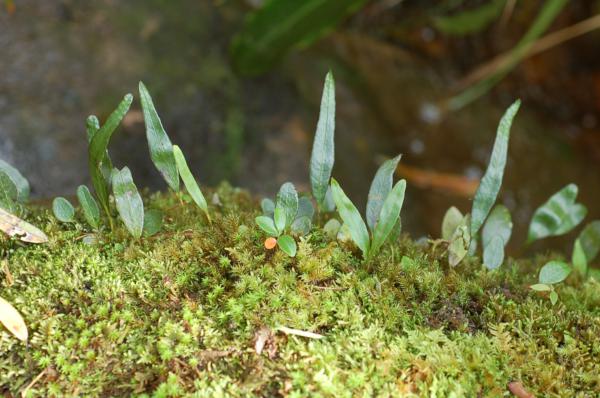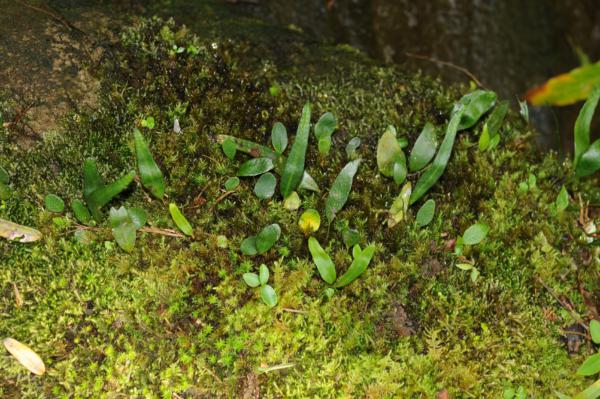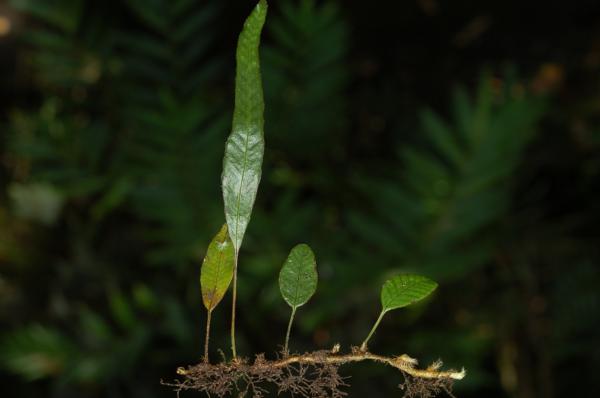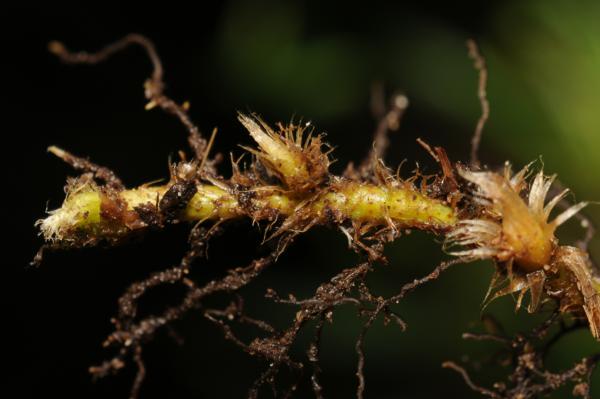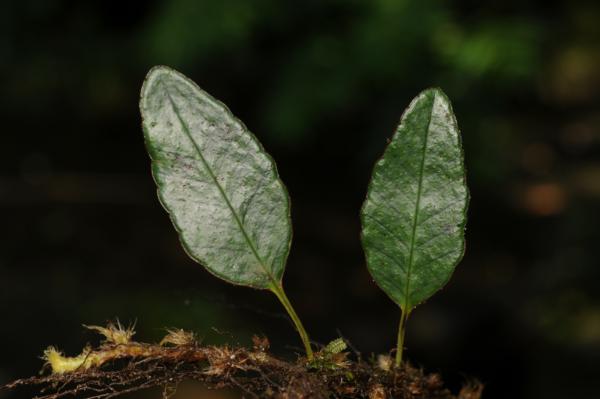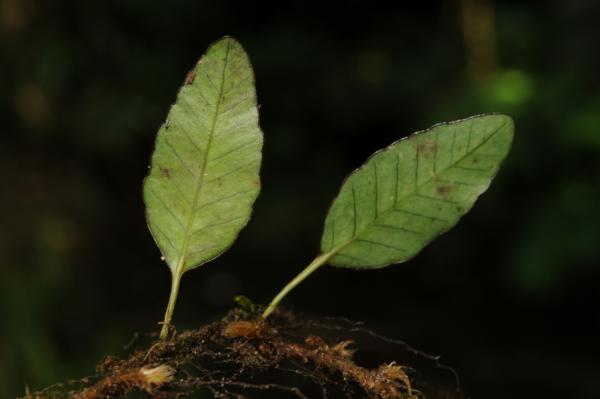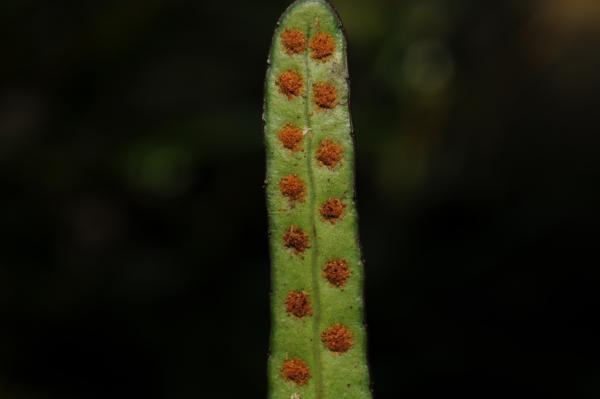
Selliguea rhynchophylla (Hook.) Fraser-Jenk.
Family
Polypodiaceae
Nomenclature
Selliguea rhynchophylla (Hook.) Fraser-Jenk., Taxon. Revis. Indian Subcontinental Pteridophytes : 48. 2008. – Polypodium rhynchophyllum Hook., Icon. Pl.: t. 954. 1854; C.Chr., Contr. U.S. Natl. Herb. 26: 334. 1931. – Pleopeltis rhynchophylla (Hook.) T.Moore, Index Fil.: lxxviii. 1857; Bedd., Handb. Ferns Brit. India: 353, f. 198. 1883. – Phymatodes rhynchophylla (Hook.) Ching, Contr. Inst. Bot. Natl. Acad. Peiping 2: 69. 1933; Tardieu & C.Chr., Fl. Indo-Chine 7(2): 471. 1941. – Crypsinus rhynchophyllus (Hook.) Copel., Gen. Fil.: 20. 1947; Holttum, Dansk Bot. Ark. 20: 21. 1961; Tagawa, J. Jap. Bot. 38: 330. 1963; Tagawa & K.Iwats., SouthE. Asian Stud. 5: 59. 1967; Tagawa & K.Iwats., Fl. Thailand 3: 556, f. 56.3. 1989; Boonkerd & Pollawatn, Pterid. Thailand: 268. 2000.
Description
Rhizome long creeping, about 1.2 mm diam., densely scaly throughout; scales ovate with long tails up to 5 by 1.2 mm, membranous, entire at margin, light brown. Fronds in two forms. Smaller sterile fronds on short stipes of 5–20 mm in length, oval or ovate-oblong, round to moderately acute at both the base and apex, 2–3.5 by about 1.5 cm. Larger soriferous fronds: stipes 1.5–5 cm long, scaly at base, glabrescent upwards; laminae lanceolate, cuneate at base, broadest at 1/5–1/4 way from the base, narrowing at the soriferous portion of upper 1/4–1/2, acute to round at apex, 5–14 by 1.2–2 cm, the soriferous portion less than 1 cm in breadth; main lateral veins obscure at 1.5 cm inside the margin, other veinlets hardly visible, anastomosing to form irregular areoles with included free veinlets; coriaceous, green, paler beneath, glabrous; cartilagenous margin notched, thick and dark brown or black. Sori one between adjacent main veins, a single row at each side of midrib, half-way or a little closer to midrib, round , up to 2.5 mm diam.
Distribution in Thailand
NORTHERN: Chiang Mai, Phitsanulok; NORTH-EASTERN: Loei; SOUTH-WESTERN: Kanchanaburi; SOUTH-EASTERN: Chanthaburi.
Wider Distribution
N India, Burma, SW China, and Indochina.
Ecology
Not so rare in mossy forests. On mossy tree trunks, or rarely on mossy rocks in dense evergreen forests at high altitudes (1200–1700 m).
Proposed IUCN Conservation Assessment
Least Concern (LC). This species is widespread and not under any known threat.
Voucher specimens - Thailand
Middleton et al. 5099, Phitsanulok, Phu Hin Rong Kla National Park (E); Middleton et al. 5154, Loei, Phu Luang Wildlife Sanctuary (E).
Habit
Habit
Whole plant with shorter sterile and longer fertile fronds
Rhizome
Upper surfaces of sterile fronds
Lower surfaces of sterile fronds
Old sori
Site hosted by the Royal Botanic Garden Edinburgh. Content managed by Stuart Lindsay, Gardens by the Bay, Singapore and David Middleton, Singapore Botanic Gardens. Last updated 24 January 2012
